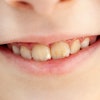It's a dentist's worst nightmare: A routine procedure turns suddenly, irrevocably wrong. A patient dies.
Such accidents evoke particular horror when the patient is a child -- as in the case of 7-year-old Jacqueline Martinez who died last week in Riverside, CA, apparently by choking on an extracted molar.
Martinez's dentist, Thien Luong, D.M.D., could not be reached for comment, leaving details about the March 4 procedure at New Smile Dental Office unclear. But experts in pediatric dentistry and tooth extractions say the case should remind dentists of the simple precautions that can normally prevent such accidents.
By the time emergency workers reached the dental office, there was little they could do, said Mike Fisher, division chief of the Riverside Fire Department. An unidentified person was performing mouth-to-mouth resuscitation on the child when the fire department team arrived. The team tried advanced life support methods and reached for the tooth with McGill forceps, but couldn't get it from behind the vocal chords, he said. So they rushed Martinez to a Riverside hospital.
Transferred to the pediatric unit at the Loma Linda University Medical Centre, Martinez continued her decline. She was pronounced dead on March 7. Results of a March 11 autopsy have not been released.
According to reports in newspapers, Dental Board of California enforcement chief Shirley Moody has assigned an investigator to the case.
Aspirating a tooth is always a risk during dental procedures, but it is extremely uncommon, said Michael Rethman, D.D.S., M.S., past president of the American Academy of Periodontology and an adjunct faculty member at the University of Maryland.
"It happens when a tooth or a fragment of a tooth is not controlled well by the instrument that the dentist is using," said Dr. Rethman. The risk is elevated when a patient is fully laid back as opposed to partially sitting up, he explained. The chances of such an incident resulting in a death are extremely rare.
"In this case there is a good chance the dentists did everything right. It can happen to the best of dentist," he concluded.
A. Jeffrey Wood, D.D.S., an associate professor and chair of the department of pediatric dentistry at the University of the Pacific School of Dentistry said that children's behavior in the dental operatory is less predictable than adults' and special precautions should be taken while treating them.
Here are some of his recommended precautions while doing an extraction:
- Use a rubber dam to isolate an individual tooth or groups of teeth. This protects against tooth fragments falling down the patient's airway.
- In situations where the rubber dam cannot be used, use a 2 x 2-inch gauze, open it, and put it at the back of the mouth. (But take care to keep nasal passages unobstructed. In 2006, a 3-year-old boy reportedly asphyxiated during a dental procedure in which gauze caught in his throat and the dentist covered his nose.)
- If a child is completely unmanageable, hold off from doing the extraction and consider sedation.
- If something gets lodged into the back of the mouth, roll the child to the left side to avoid anything going into the lungs.
Dr. Michal Ignelzi, D.D.S., Ph.D., a pediatric dentist and orthodontist in Greensboro, NC, said that he had never heard of such a case. In most cases, if a child does start choking on a tooth fragment they will reflexively cough it out, "unless they are sedated," he said. Dentists should take particular precautions when patients are sedated.
Unlike Dr. Wood, Dr. Ignelzi advocates using the 2 x 2-inch square of gauze during most extractions.



















